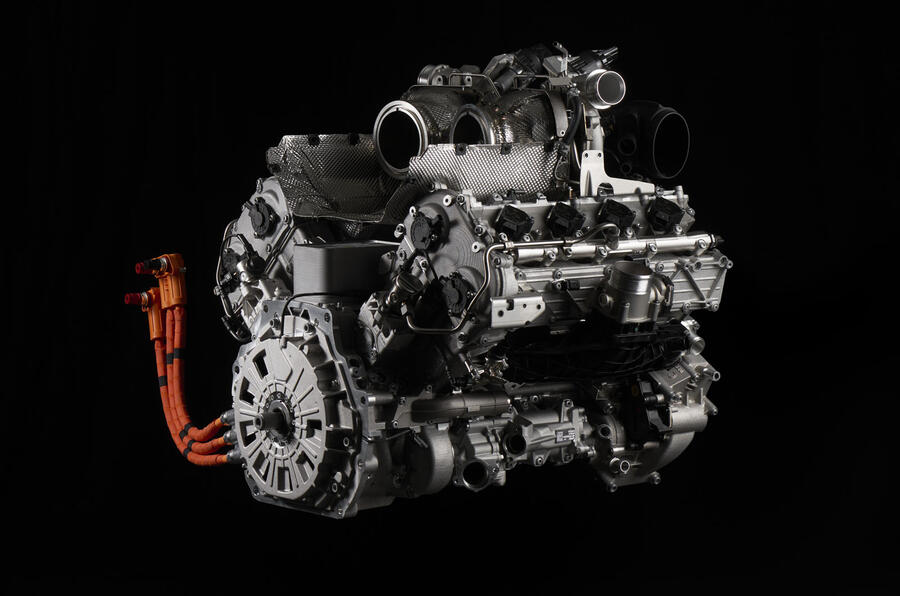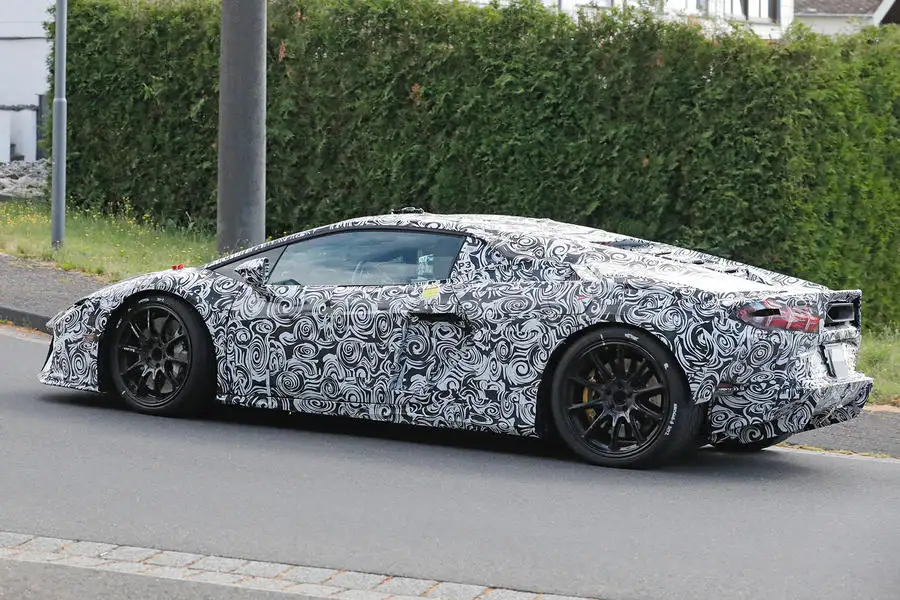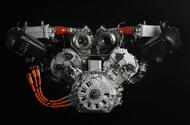New '634' supercar gets nearly 800bhp from fastest-spinning eight-pot on the road, plus boost from axial EV motor
The replacement for the Lamborghini Hurácan will feature one of the most powerful and highest-revving V8 engines yet installed in a production car.Â
The new Ferrari 296 GTB rival, codenamed 634, will be revealed in August, as previously reported by Autocar, and is set to be launched by the end of the year.Â
It will have a plug-in hybrid powertrain, at the centre of which is a twin-turbocharged 4.0-litre V8 developing a huge 789bhp and 538lb ft in its own right - far more than the reserves pumped out by the Hurácan's atmo V10, even in extreme STO guise.
Perhaps most notable, though, is that this new engine redlines at a screaming 10,000rpm - "a figure normally reserved for racing engines", Lamborghini said.Â
Indeed, that figure will make this the highest-revving V8 fitted to any current production car. In fact, only a handful of road-going hypercars – including the Mercedes-AMG One, GMA T50 and Aston Martin Valkyrie – have engines that spin faster.

The Lamborghini Urus also uses a 4.0-litre twin-turbo V8, but while that is an Audi-developed lump shared with various Porsche, Bentley and Audi RS models, the 634's powerplant is said to be all-new and developed entirely in Sant'Agata.Â
Lamborghini said a "crucial element of the design process was to define the sound" of the new engine, which it promises will have a "unique and distinctive character and deliver the driver an unparalleled driving experience".Â
It will work in tandem with a slimline, lightweight, axial-flux electric motor integrated ahead of the eight-speed dual-clutch automatic gearbox, which sends up to 148bhp and 221lb ft to the rear axle.
Lamborghini hasn't yet confirmed if this motor is supplied by British company Yasa, as are the Revuelto's.Â
Nor has the manufacturer given a total combined power output, but it's likely to be somewhere north of 900bhp.Â
The 634's drivetrain is markedly different to that of the V12 car, which has two electric motors on the front axle and one in the gearbox, although the 634 is expected to also have its small-capacity traction battery housed in the transmission tunnel in the name of compact packaging and optimal weight distribution.Â
The move to a PHEV system has significant implications for the dynamic behaviour of the Hurácan's replacement. “The package itself is much better than a normal ICE carâ€, Lamborghini sales and marketing boss Federico Foschini told Autocar.Â
“There are characteristics that you cannot achieve if you don't have an electric motor [such as active torque vectoring]; it gives you the opportunity to leverage even more on the potential of the engine.â€
Visually, the new supercar will be clearly related to the flagship Revuelto. It will have a dramatic silhouette that adheres to head of design Mitja Borkert’s ‘spaceship’ ethos, as well as a raft of cues that have become Lamborghini hallmarks, including a gaping hexagonal exhaust, Y-shaped LED light designs and prominent air channels throughout the body to boost downforce.Â
The basic principles of the ‘monofuselage’ carbonfibre monocoque introduced with the Revuelto are also expected to be carried over. However, the abundance of expensive composites used in the flagship supercar’s structure are unlikely to be shared by the junior model.

Instead, it’s set to use cheaper aluminium where possible, without incurring a major penalty to rigidity, in line with its more entry-level billing. The rear subframe is already aluminium on the Revuelto, but the front end could follow suit on the junior supercar, for instance.
This philosophy of reserving exotic materials for key structural elements would match that used for the Huracán and Audi R8. They featured a carbonfibre ‘backbone’ – the central tunnel and rear bulkhead – but used mostly aluminium elsewhere.
The platform will also be shortened to visually distinguish the new car from the 4947mm-long Revuelto. For reference, the run-out Huracán Tecnica is 4567mm long.
The move to the monofuselage chassis also enables the electrification of the Huracán successor.Â
Lamborghini will build the Huracán successor on the same production line as the Revuelto. It will be the first time that the brand has built both of its supercars in series, on the same line – facilitated, no doubt, by the sharing of major architectural and electrical components.



